To test an alternator by disconnecting the battery, start the engine and locate the battery terminals. Disconnect the negative battery terminal carefully. Use a voltmeter to run a voltage test. If the alternator is working properly, the voltage should be around 14 volts. For a more accurate test, use a multimeter.
I’m thrilled to dive into a topic that’s close to my heart and crucial for our beloved vehicles – the alternator. Now, I’ve spent countless hours under the hood, tinkering and troubleshooting, and I can tell you, understanding your alternator is a game-changer. It’s like the heart of your car’s electrical system, and knowing how to test it? Well, that’s a skill worth its weight in gold.
Over the years, I’ve seen many methods to test an alternator, but one that often sparks debate is the battery disconnect test. It’s a bit of a maverick move, and while it’s not my go-to method (safety first, folks!), it’s worth discussing. So, buckle up as we delve into the nitty-gritty of testing your alternator by disconnecting the battery. Trust me, it’s going to be an enlightening ride!
What is an Alternator?
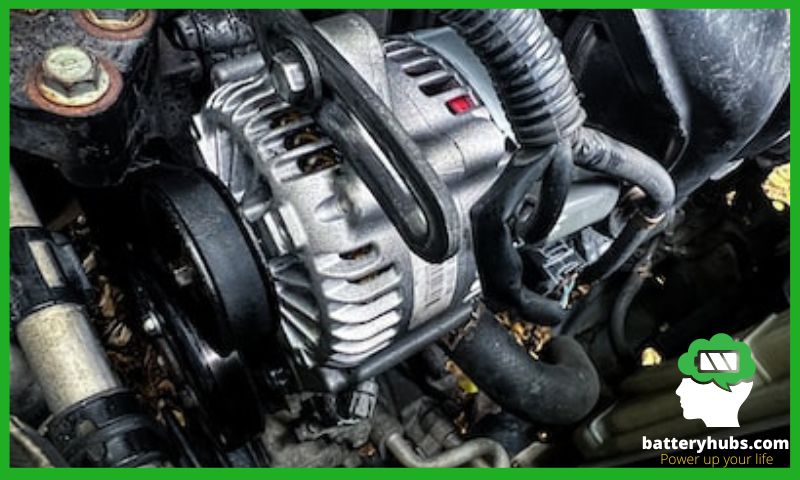
As someone who’s been elbow-deep in engines for more years than I care to count, I can tell you that the alternator is one of those unsung heroes under the hood. It’s like the drummer in a rock band—always in the background, but without it, the whole show comes to a grinding halt.
Alternator’s Role in a Vehicle
The alternator, my friends, is the powerhouse of your car. It’s the mini electric generator that works tirelessly to keep your battery charged and your car’s electrical systems humming along. Every time you turn the ignition, it’s the alternator that says, “Hold my beer, I got this,” and powers up everything from your headlights to your radio.
How the alternator works
Now, how does this marvel of automotive engineering work, you ask? Well, let me break it down for you. The alternator is driven by your car’s engine via a serpentine belt. As the engine runs, it spins the alternator, which in turn generates electricity. This electricity is then used to power all your car’s electrical systems and charge the battery.
The alternator is a bit like a self-sustaining ecosystem. It uses the mechanical energy from the engine to create electrical energy, which then powers the electrical systems that, you guessed it, help run the engine. It’s a beautiful cycle, really.
But here’s the kicker. The alternator doesn’t just create electricity willy-nilly. It has a built-in voltage regulator that ensures it generates just the right amount of electricity. Too much, and you could fry your car’s electrical systems. Too little, and your battery could die. It’s a delicate balancing act that the alternator performs with aplomb.
Now, you might be wondering, “How do I know if this magnificent beast of an alternator is doing its job?” Well, that’s where testing comes in. But let me be clear: testing an alternator by disconnecting the battery is a big no-no. It’s like testing if a parachute works by jumping off a cliff. Not a good idea, trust me.
Instead, use a voltmeter to test the alternator. With the engine off, the battery voltage should be between 12.5 and 12.8 volts. Start the engine and check for increased voltage readings. If you see higher readings, your alternator is probably in good shape. If not, well, it might be time to roll up your sleeves and get to work.
But hey, don’t sweat it. With a bit of know-how, the right tools, and a can-do attitude, you can tackle any alternator issue that comes your way. And remember, in the world of car repair, knowledge is power. So keep learning, keep exploring, and keep having fun. Because that’s what it’s all about, right?
Now, let’s get out there and show those alternators who’s boss!
Symptoms of a Bad Alternator
Hello there, fellow car enthusiasts! It’s your friendly neighborhood battery expert here, ready to dive into the nitty-gritty of alternators. Buckle up, because we’re about to embark on a journey through the land of alternators, exploring the signs of a failing one and its impact on your beloved vehicle.
Signs that your alternator may be failing
The alternator is the unsung hero of your vehicle’s electrical system. It’s like the heart, pumping life (in this case, electricity) into every part of your vehicle. But just like any other part, it can start to show signs of wear and tear. Here are some symptoms to watch out for:
- Dim headlights: Your alternator is the powerhouse that keeps your headlights bright. If they’re dimmer than usual, it might be a sign that your alternator is not producing enough power.
- Slow engine crank: When you turn the key and the engine is slow to start, it could be a sign that your alternator is on its last legs.
- Warning lights: Most cars have a dashboard warning light that signals when your alternator is having a tough time. It’s usually shaped like a battery or says “ALT” or “GEN”.
- Strange noises: Alternators have a lot of spinning parts, and when they start to wear out, they can produce some unusual noises. If you hear a grinding or whining noise, it’s time to have your alternator checked out.
- Electrical issues: The alternator powers all the electrical components in your car. If you notice that your power windows and radio are not working as they should, your alternator might be to blame.
- Battery problems: If your battery is constantly dying, it might not be the battery’s fault. The alternator might not be charging the battery properly.
Remember, these symptoms could also indicate other issues, so it’s important to get your vehicle checked by a professional to pinpoint the problem.
The impact of a bad alternator on your vehicle
Now that we’ve covered the symptoms, let’s talk about the impact of a bad alternator on your vehicle.
- Battery drain: The alternator recharges your battery. If it’s not working properly, your battery will drain quickly, and you might find yourself stranded with a dead battery.
- Poor performance: The alternator powers all the electrical systems in your car. If it’s failing, these systems won’t function properly, which can affect everything from your headlights to your power steering.
- Breakdown: If your alternator fails completely while you’re driving, your car will stop running. This is because the battery alone can’t support all of your car’s electrical systems for very long.
- Costly repairs: If your alternator damages your battery before it’s replaced, you could end up having to replace both, which can be quite costly.
In conclusion, your alternator is a vital part of your vehicle. If it starts to fail, it can lead to a host of problems. So, if you notice any of the symptoms we’ve discussed, get your vehicle to a mechanic ASAP. It’s always better to be safe than sorry, especially when it comes to your car.
Remember, folks, cars are like pets. They can’t tell us what’s wrong, so it’s up to us to notice when they’re not feeling well. Keep an eye on your alternator, and your car will thank you. Until next time, drive safe and keep those engines purring!
How to Test Your Alternator by Disconnecting the Battery
Now that we’ve covered the basics of what an alternator is and how it works, let’s dive into the practical side of things. In the following section, I’ll provide a step-by-step guide on how to test your alternator by disconnecting the battery. This hands-on approach will give you a clear understanding of your alternator’s health and performance. Let’s get started!
A step-by-step guide to testing the alternator
As someone who’s been around the block a few times with car maintenance, I can tell you that testing your alternator is a task that’s easier than you might think. But before we dive into the steps, let me remind you that safety should always be your top priority. So, make sure you’re wearing protective gloves and goggles, and that your car is turned off before you start.
Step-01: Locate the battery
The first step is to locate your car’s battery. It’s usually in the engine compartment but in some cars, it might be in the trunk or under the rear seat.
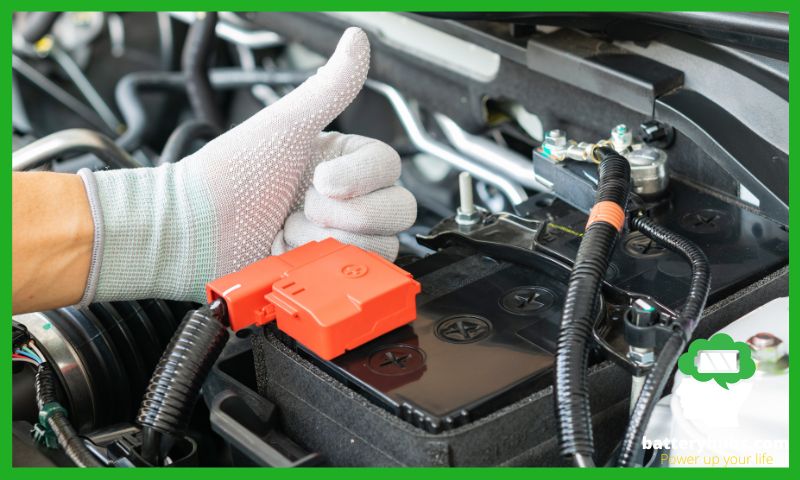
Step-02: Check the battery voltage
Using a multimeter, check the voltage of your battery. It should be around 12.6 volts when the car is off. This is your baseline reading.
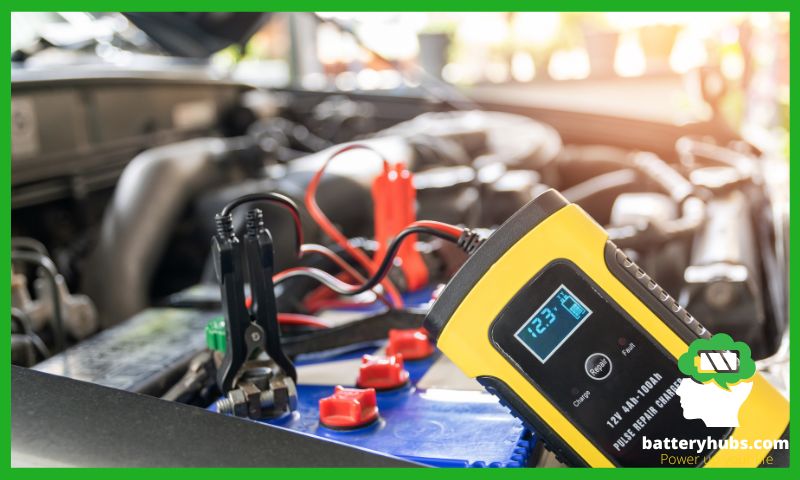
Step-03: Start the car
Now, start your car and let it idle. The voltage reading on the multimeter should increase to between 14.2 and 14.7 volts. This indicates that the alternator is charging the battery.

Step-04: Load the alternator
Turn on several electrical devices in your car, such as the headlights, radio, and air conditioning. This puts a load on the alternator. The voltage reading should not drop below 13 volts. If it does, it could indicate a problem with the alternator.
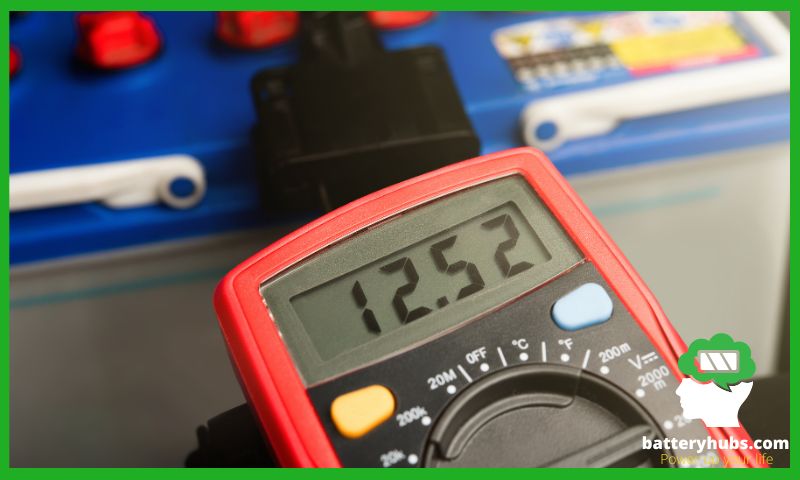
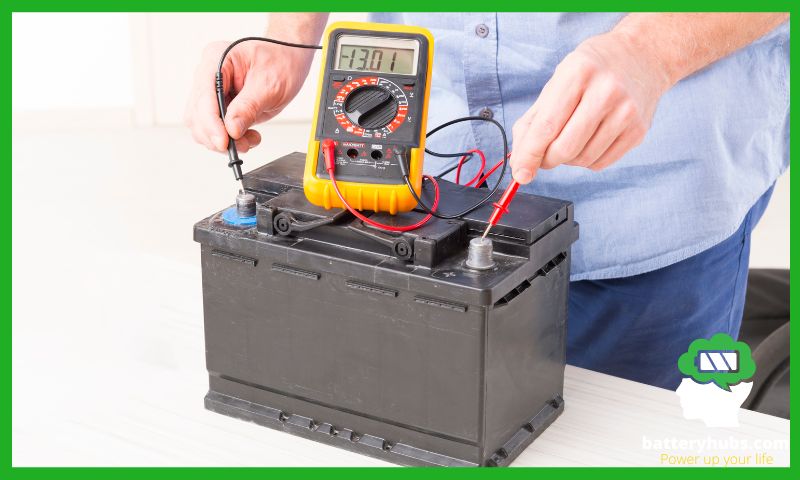
Step-05: Disconnect the battery
Now, for the moment of truth. While the car is still running, carefully disconnect the negative terminal of the battery. If the car continues to run, this indicates that the alternator is working properly as it is able to sustain the car’s electrical system without the battery. If the car dies immediately, this could indicate a problem with the alternator.
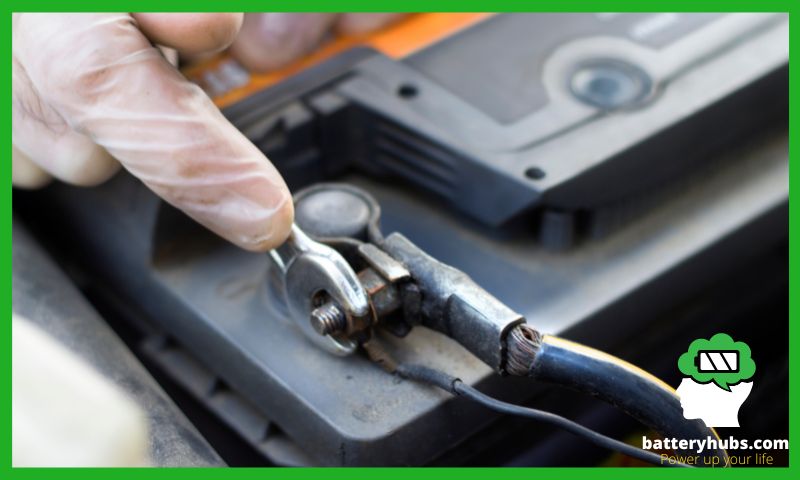
Safety precautions to take during the test
While this test can give you a good indication of the health of your alternator, it’s important to note that it’s not without risks. Disconnecting the battery while the car is running can potentially cause a voltage spike that can damage sensitive electronic components in your car. Therefore, it’s always best to perform this test as a last resort and to use a multimeter or a dedicated alternator tester as the primary method of testing your alternator.
Remember, safety first! Always wear protective gear, and never attempt to disconnect the battery while the car is running if you’re not comfortable with the process. If in doubt, it’s always best to take your car to a professional mechanic.
In the end, knowing how to test your alternator is a valuable skill that can save you time and money. It can help you diagnose car problems and avoid being stranded on the side of the road with a dead battery. So, grab your multimeter and get to testing!
Understanding the Test Results

Alright, folks! Now that we’ve gone through the steps of testing your alternator, it’s time to make sense of the results. After all, those numbers on your multimeter aren’t just for show. They’re telling you a story about the health of your alternator, and it’s up to us to interpret it. So, let’s dive in!
How to interpret the results of the alternator test
Interpreting the results of your alternator test is like being a detective. You’ve gathered the clues, and now it’s time to piece them together. Here’s what those voltage readings are telling you:
- Battery voltage with the engine off: This should be around 12.6 volts. If it’s significantly lower, your battery might be the issue, not the alternator.
- Battery voltage with the engine idling: This should increase to between 14.2 and 14.7 volts. If it doesn’t, your alternator might not be charging the battery properly.
- Battery voltage under load: When you turn on several electrical devices in your car, the voltage should not drop below 13 volts. If it does, your alternator might be struggling to keep up with the demand.
- Battery voltage with the engine running and the battery disconnected: If your car continues to run after you disconnect the battery, your alternator is likely in good shape. If the car dies immediately, your alternator might not be able to sustain the car’s electrical system on its own.
What different voltage readings mean
Now, let’s break down what different voltage readings could mean:
- High voltage readings (over 14.7 volts): This could indicate that your alternator is overcharging the battery, which can damage the battery and other electrical components in your car.
- Low voltage readings (under 13 volts): This could indicate that your alternator is undercharging the battery. This could be due to a problem with the alternator or a poor connection in the charging system.
- Voltage readings that fluctuate wildly: This could indicate a problem with the voltage regulator, which is often built into the alternator. The voltage regulator controls the output of the alternator to keep the voltage in a certain range.
Remember, these are just guidelines. The exact voltage readings can vary depending on your car and the condition of your battery and alternator. If you’re unsure about your test results, it’s always a good idea to consult with a professional.
In the end, understanding the results of your alternator test is just as important as performing the test itself. It’s like I always say, knowledge is power, especially when it comes to taking care of your car. So, keep these tips in mind, and you’ll be a car diagnostic pro in no time!
Alternatives to the Battery Disconnect Test
Hey there, car enthusiasts! Now, I know we’ve talked a lot about the battery disconnect test, but it’s not the only way to check the health of your alternator. In fact, there are several other methods that can be just as effective, if not more so. So, let’s take a look at some of these alternatives, shall we?
Other methods for testing the alternator
- Multimeter Test: This is one of the most accurate ways to test your alternator. With the engine off, a healthy battery should show a reading of around 12.6 volts. With the engine running, this should increase to between 13.7 and 14.7 volts. If the reading is outside these ranges, it could indicate a problem with the alternator.
- Voltage Drop Test: This test checks for poor connections in the charging system. You’ll need a multimeter for this test as well. You’re looking for a voltage drop of less than 0.5 volts for the positive side and less than 0.2 volts for the negative side.
- Bench Test: This involves removing the alternator from your car and taking it to an auto parts store. Many stores will test your alternator for free. This is a great option if you’re already considering replacing the alternator, as it requires a bit of work to remove it.
- Professional Diagnostic Test: If you’re not comfortable testing the alternator yourself, or if you want a second opinion, you can always take your car to a professional mechanic. They have specialized tools and expertise to accurately diagnose alternator problems.
When to use these alternative methods
Now, you might be wondering when you should use these alternative methods. Well, here’s my take:
- Multimeter Test: This is a great first step for any DIYer. It’s relatively easy to perform and can give you a good idea of the health of your alternator.
- Voltage Drop Test: This is a bit more advanced, but it’s a great option if you’re comfortable with a multimeter and want to check for poor connections in the charging system.
- Bench Test: This is a good option if you’re already considering replacing the alternator, as it requires removing the alternator from your car.
- Professional Diagnostic Test: If you’re not comfortable testing the alternator yourself, or if you’re experiencing complex electrical issues, it’s best to take your car to a professional.
Remember, the battery disconnect test is not without risks. It can potentially cause a voltage spike that can damage sensitive electronic components in your car. Therefore, these alternative methods can often be safer and more accurate ways to test your alternator.
What to Do If Your Alternator Is Bad?
Well, folks, we’ve come to the part of our journey where we face the inevitable question: what do you do if your alternator is bad? It’s a tough spot to be in, but don’t worry, I’ve got your back. Let’s explore your options and get you back on the road in no time!
Options for fixing or replacing a bad alternator
- Repair the Alternator: In some cases, a bad alternator can be repaired. This usually involves replacing the brushes, voltage regulators, or bearings. However, this requires a certain level of technical skill and isn’t typically a DIY job.
- Replace the Alternator: More often than not, a bad alternator will need to be replaced. You can either do this yourself if you’re comfortable with car repairs, or you can take your car to a professional mechanic. If you decide to do it yourself, make sure to disconnect the battery first to avoid any electrical shocks.
- Rebuild the Alternator: This is a more involved process that involves disassembling the alternator and replacing the worn-out parts. This is usually done by professionals and can be a cost-effective alternative to buying a new alternator.
Tips for maintaining your alternator
Now, let’s talk about how to keep your alternator in tip-top shape:
- Keep Your Battery in Good Condition: A bad battery can put extra strain on your alternator and cause it to wear out faster. Make sure your battery is in good condition and replace it if necessary.
- Check Your Belts: The alternator is driven by the engine via a belt. If this belt is worn out or loose, it can affect the performance of your alternator. Check your belts regularly and replace them if needed.
- Listen for Noises: As I mentioned earlier, a failing alternator can make unusual noises. If you hear a grinding or whining noise coming from your alternator, it’s time to have it checked out.
- Regular Inspections: Have your alternator inspected regularly by a professional, especially if you notice any signs of a problem. Early detection can prevent more serious issues down the line.
Remember, your alternator is a vital part of your car’s electrical system. Taking good care of it can extend its lifespan and keep your car running smoothly. So, keep these tips in mind, and your alternator will thank you!
Conclusion
Well, there you have it, folks! We’ve journeyed through the ins and outs of alternators, from understanding what they do, recognizing the signs of a failing one, learning how to test them, and finally, what to do if yours is on the fritz. Remember, your alternator is a crucial component of your vehicle, and keeping it in good working order is key to your car’s performance and safety on the road.
Whether you’re a seasoned DIYer or prefer to leave the heavy lifting to the professionals, understanding your alternator can help you make informed decisions about your vehicle’s maintenance. And remember, if you’re ever in doubt, don’t hesitate to consult with a professional. Here’s to smooth driving and healthy alternators!
In the end, it all comes down to understanding your vehicle and its needs. The alternator is just one piece of the puzzle, but it’s a crucial one. By keeping it in good shape, you’re ensuring that your vehicle runs smoothly and efficiently.
Now, you might be wondering, “What else can I do to keep my car in top shape?” Well, I’m glad you asked! There’s a wealth of information out there to help you maintain your vehicle. For instance, did you know that cleaning your battery terminals can significantly improve your car’s performance? Check out our guide on how to disconnect and clean your battery terminals for more information.
And while we’re on the topic of batteries, it’s important to prevent corrosion on your battery terminals. Not sure how to do that? Don’t worry, we’ve got you covered! Here’s our comprehensive guide on what to put on battery terminals to prevent corrosion.
But what if you need to replace your battery cables? We’ve got a handy guide on how to cut a battery cable that will walk you through the process step by step.
And it’s not just your car you need to worry about. Did you know that your smoke detector can still beep even after changing the battery? Learn more about this common issue in our article on why smoke detectors still beep after changing the battery.
Lastly, it’s important to remember that car batteries can sometimes die suddenly. If you’re wondering can a car battery just die suddenly, we’ve got the answers you’re looking for.
And if you ever find yourself dealing with a stripped side post battery, don’t panic! We’ve got a guide on how to fix a stripped side post battery that can help.
Remember, knowledge is power. The more you know about your vehicle and its components, the better equipped you’ll be to handle any issues that come your way. So, keep learning, keep exploring, and keep driving!
FAQ
Can you test an alternator with a dead battery?
Yes, you can test an alternator with a dead battery. However, the test might not be accurate because the alternator needs a certain level of voltage from the battery to operate correctly. If the battery is dead, the alternator might not receive the necessary voltage, leading to a false negative result.
What are the signs of a bad alternator?
Signs of a bad alternator can include dimming or flickering headlights, a weak or dead battery, an illuminated warning light on the dashboard, difficulty starting the car, or a whining or grinding noise from the engine area.
Can a car run with a bad alternator?
A car can run with a bad alternator for a short period, depending on the charge level of the battery. However, since the alternator is responsible for charging the battery and powering the electrical system while the engine is running, a faulty alternator will eventually lead to a dead battery and the car will stop running.
How long can you drive with a bad alternator?
The duration you can drive with a bad alternator depends on the condition of your battery. If your battery is fully charged and in good condition, you might be able to drive for a few hours. However, if your battery is old or weak, it might not last more than 30 minutes.
Can a bad alternator destroy a new battery?
Yes, a bad alternator can destroy a new battery. If the alternator is not properly charging the battery, the vehicle will rely more on the battery for power, which can cause it to drain quickly and reduce its lifespan.
How do you know if it’s your battery or alternator?
To determine whether it’s your battery or alternator that’s causing issues, you can use a voltmeter to check the voltage of the battery while the car is running. If the voltage is between 13.5 and 14.5 volts, your alternator is likely working fine. If it’s lower, your alternator might be the problem. If the battery doesn’t hold a charge even after being charged, or if it’s more than 3-4 years old, the battery might be the issue.
